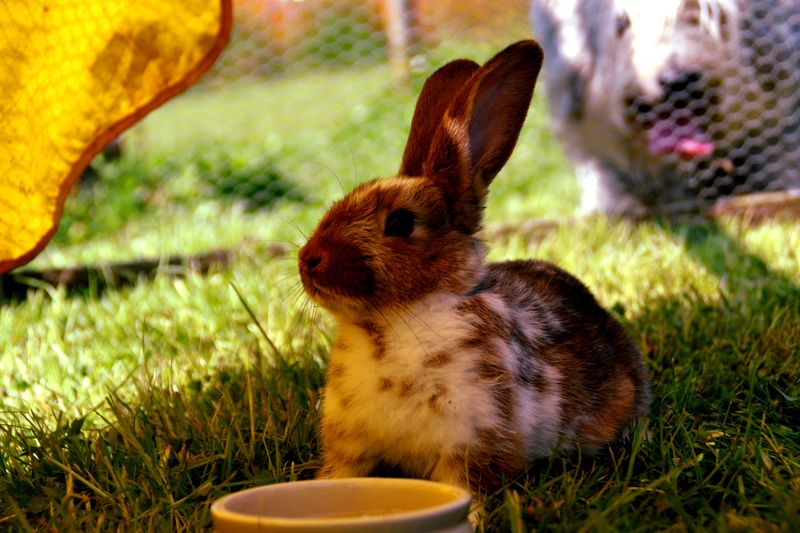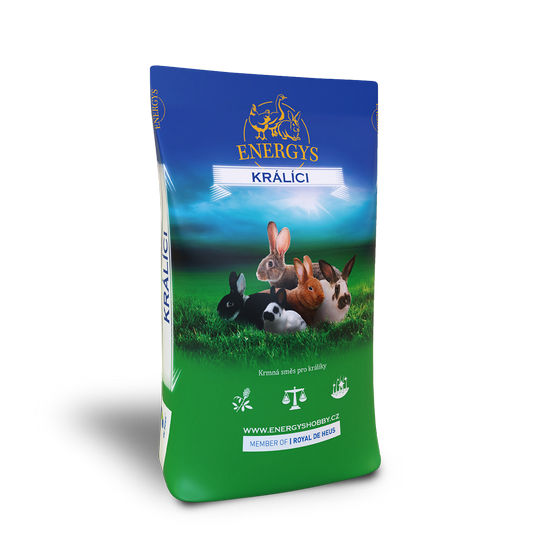Rabbits
Poultry
Laying hens
Quails
Guinea pigs
Pigs
Ostriches
Sheep and goats
Pigeons
Pheasants
Forest animals
Problems with fertilization, breeding and conception of rabbits
One of the most common problems in raising rabbits is the breeding and conception of rabbits. If you do not want to have problems with infertility, breeding or conception, it is good to check and possibly adjust the amount of feed and the environment in which the females live.
Factors affecting the fertility of rabbits
Conception, and overall fertility, are influenced by a number of factors such as environment and feeding. However, only some of these factors can be directly influenced:
Ambient temperature
Low and high temperatures limit fertility. Temperatures above 25°C may also have a negative effect.
Length of light day
The optimum is a prolonged day, or an artificial extension to 14 to 16 hours of light per day is appropriate.
Nutrition can have a major impact
Nutrition must correspond to breeding rabbits already during the rearing period (it must not be fattening). The easiest is to feed them with complete compound feed for breeding rabbits, where it is recommended to feed about 50 g per kg in the period before breeding. The basic diet can also be supplemented with natural sources of vitamins such as carrots, parsley, celery, fruit tree twigs or spring dandelions.

Breeding of females
Females must be in optimal condition before mating, neither obese nor skinny. She should not even be hungry at that moment, because natural processes leading to reproduction simply do not work.
The optimal time for mating is then simply determined according to the condition of the external genitals of the rabbit. If the vulva is red and swollen, we can expect successful impregnation.
Related posts
10. April 2024
Keeping dwarf rabbits as pets is becoming increasingly popular. It does not require a lot of space and is ideal for people who live in smaller homes or apartments. Dwarf rabbits are also very friendly, so it’s no wonder that people are choosing them for this purpose more and more often. As with all animals,…
30. August 2022
In this article we will discuss several rabbit diseases – ear scab, tyzzer’s disease and heat stress.
24. August 2022
In this article we look at two diseases – e.Coli and enterocolitis.
2. August 2022
In this article we look at two common rabbit diseases, myxomatosis and infectious rhinitis.
13. July 2022
In the following article we will discuss rabbit plague – rhd or vhd (viral haemorrhagic disease of rabbits).
Related products

RABBIT DWART
Complete pelleted feed for dwarf rabbits with high digestibility. It contains a high proportion of fibre (high alfalfa and grass cake content) and a reduced sugar and starch content. Contains flaxseed, which has a positive effect on coat quality. Suitable for daily feeding. We recommend providing rabbits with safe fresh water and hay.

RABBIT CHAMPION
Feed for show rabbits, does not include Coccidiostat. A unique mix significantly supports the quality and growth of fur. Serve when moulting and at least two months before the start of the show season.

RABBIT GOLD FORTE
A premium feed mix in an ideal make up for gestating and breast feeding females. For the intensive fattening of rabbits for a period of up to 5 days before slaughter. It supports fast growth, meat content and an excellent state of health. It contains a coccidiostat which lowers the risk of mortality.

RABBIT KLASIK FORTE
Intended for the fattening of rabbits up to a point at least 5 days before slaughter. Suitable for attaining a high meat content and an excellent state of health. Thanks to its Coccidiostat content it lowers the animals mortality.

RABBIT KLASIK
For the final phase of rabbit fattening, a minimum of 5 days before slaughter. It supports high meat content and excellent taste qualities in rabbit meat. Without a coccidiostat.

RABBIT START
For young rabbits from the start of accepting feed to 4-6 weeks after weaning. The feed helps to significantly lower the death rate in the period around weaning. It contains a raised percentage of fibre and less starch. It does not contain a coccidiostat.
